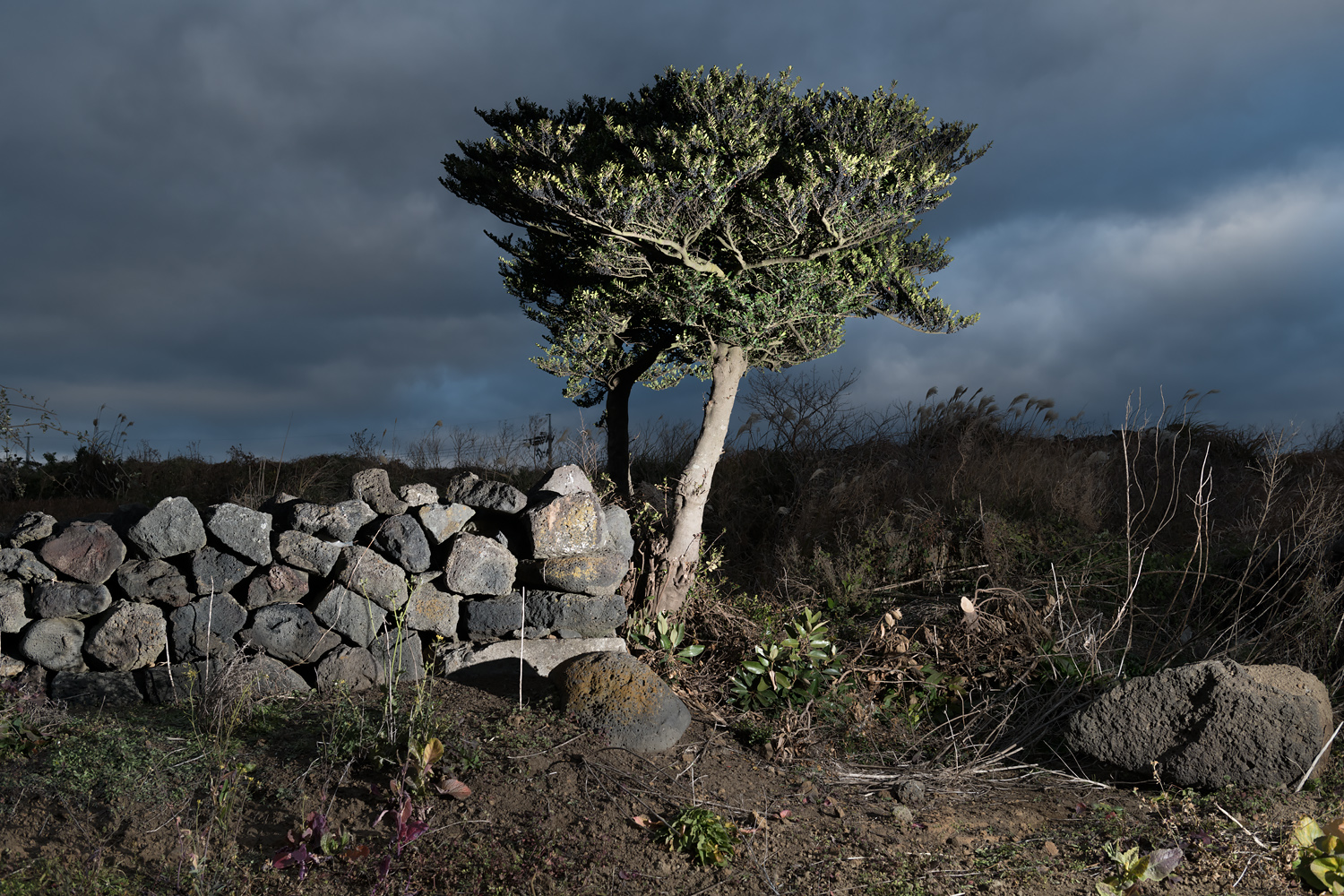| |
 |
|
| ▲ Photo by Noh Sun-taek |
This is part of a series of articles released by the Jeju April 3 70th Anniversary Commemoration Project Committee in commemoration of the 70th anniversary of the 4.3 Massacre. This article is based on an interview with 4.3 Research Institute researcher Jo Mi-young and the quotes throughout are hers.
Jeju International Airport is the gateway to Jeju Island, a place usually full of excitement. However, for some people, it is a place filled with sadness and anger.
In August. 2007, the north and south runway of Jeju International Airport was closed. Instead of planes, it was filled with excavators and specialists. The excavators were there because it was suspected that the area was a graveyard for hundreds of people killed during 4.3.
“Hundreds of people were captured and killed. All of them were buried here. Some of them might still be underneath Jeju International Airport.”
Jeju still remembers the day. The day hundreds of people never returned home. People on Jeju cannot talk easily about that day even after sixty years.
“After liberation, a bloody wind blew across Jeju. No matter whether you were guilty or not, if you were dragged away, the chance of you staying alive was really low. One in ten people died. Because of this, many families have to perform their ancestral rites on the same day. Jeju 4.3 is the painful history of Jeju.”
The Greatest Tragedy After the Liberation: The Struggle of Jeju 4.3
Thirty thousand is the number of deaths caused by the Jeju 4.3. One in ten Jeju people were killed with no reason and it can be called the greatest tragedy to have occurred since the liberation of Korea.
Talking about Jeju 4.3 used to be a taboo. Fact-finding was not carried out until fifty years after the event happened. The exhumation started after the fact-finding.
“‘The exhumation of 4.3 victims at Jeju International Airport started from August 2007 and lasted until 2009. I could not sleep because I had too many thoughts before the exhumation. I was thinking about the burial location, the condition the remains would be in, and I worried about whether or not we would find the families of the remains.”
Jeju 4.3 Research Institution researcher Jo Mi-yeong joined the exhumation business and worked as the head of the planning team. The fact that 4.3 victims were buried under the airport is well-known, but the exact location was never told.
The location of the north and south airport runway at the Jeju International Airport is where the subjects of preventive custody were executed by soldiers in 1949 and 1950. It was the representative execution location. But because it is an airport, it was hard for the general public to enter in order to retrieve bodies.
*Preventive custody: Not a legal term in Korea. When the army imprisons people despite them having done nothing wrong. It happened during the Japanese colonial period.
“When we dug in the sides of the runway hundreds of remains were found”
| |
 |
|
| Jeju Airport during the excavation: Jeju 4.3 Peace Foundation |
“We used excavators to shallowly dig into the estimated buried locations. We needed to cover it back up if it was the wrong place. Surprisingly, the remains were found almost as soon as we started. I was thrilled but at the same time it was heartbreaking. I felt sorry for the fact that we found the remains sixty years after the event happened.”
The remains were old and mixed together which made the exhumation difficult. The excavators were afraid of missing any pieces of the bones, so they made knives and spoons to dig safely.
“Do you mean episodes? There were a lot. During the exhumation, typhoon Nari came to Jeju, all the work was stopped. We stayed up late every day so that no water could get into the holes. To release our mental stress, we listened to the ‘Cultwo Show’ (radio) while working. We wanted to release some of the burden that was in our minds by listening to the radio. People who did not know us might think we were crazy.”
The exhumation continued until the construction of the runway finished. We found 390 remains from one long straight hole and one round hole on the runway. Through the DNA test, ninety-two remains went back to the families of the bereaved.
There are still remains that can not be found
“You ask why I put myself through the exhumation? Many people are missing because of the struggle of Jeju 4.3. The number of missing people is three thousand. This number includes people who were massacred and buried somewhere in Jeju. Families of the missing people cannot hold their ancestral rites or bury their ancestors at gravesites."
"If we claim the Jeju 4.3 was caused by the U.S. army and former president Rhee Syngman, then I think the government should take the responsibility from now on. To mourn for the ones who never be found isn’t the right thing for the Jeju people to do.”
This year is 70 years since the Struggle of Jeju 4.3 happened. Jo Mi-yeong emphasized that she wants to find the remains to bring them back home while their families are still alive.
“Some people are still missing. I heard that victims from the north of Jeju are still buried underneath the airport. The exhumation of the victims will start again from next year. I hope to find their remains and bring them back to their families.”
Somewhere in beautiful Jeju, there is someone who had not yet go back to their family. That is why after 70 years, the Struggle of Jeju 4.3 is still a history that never ends
|





















